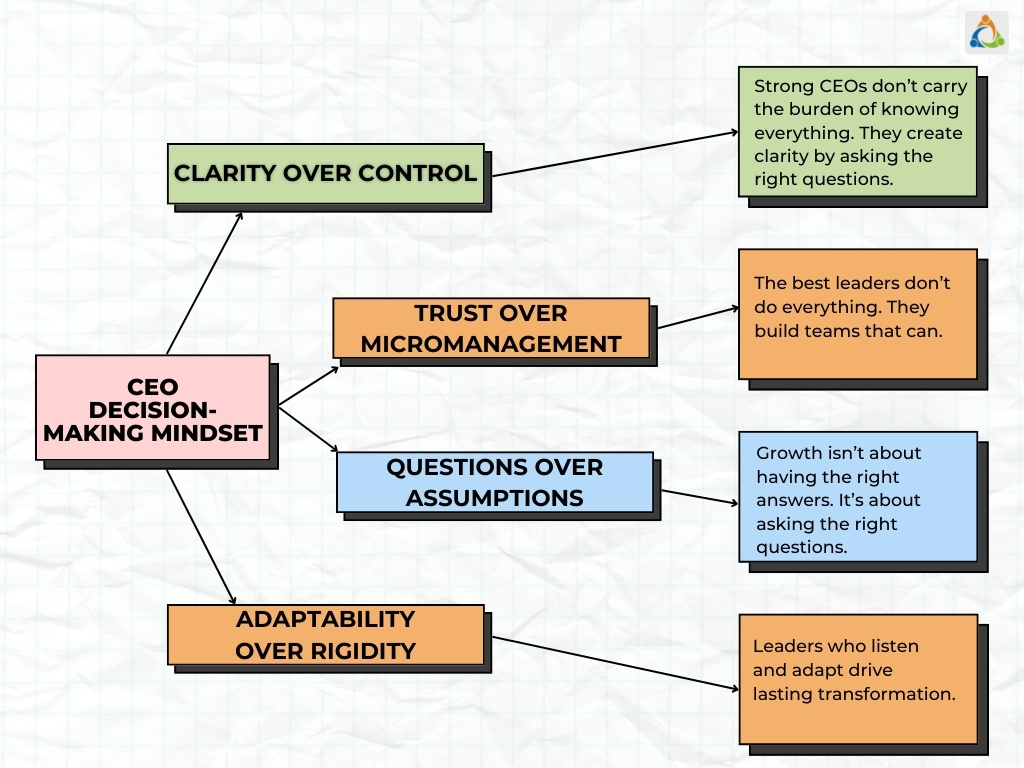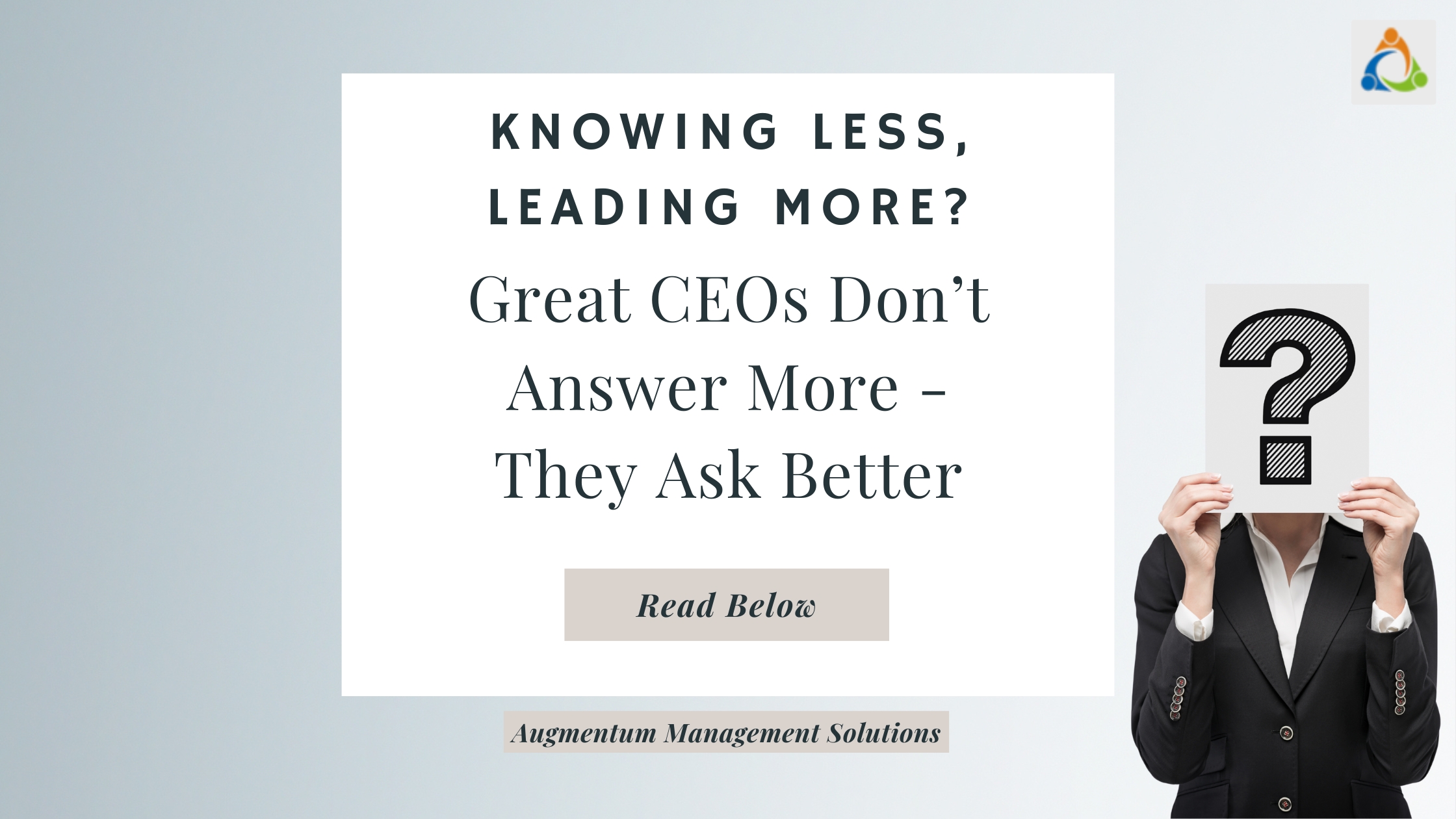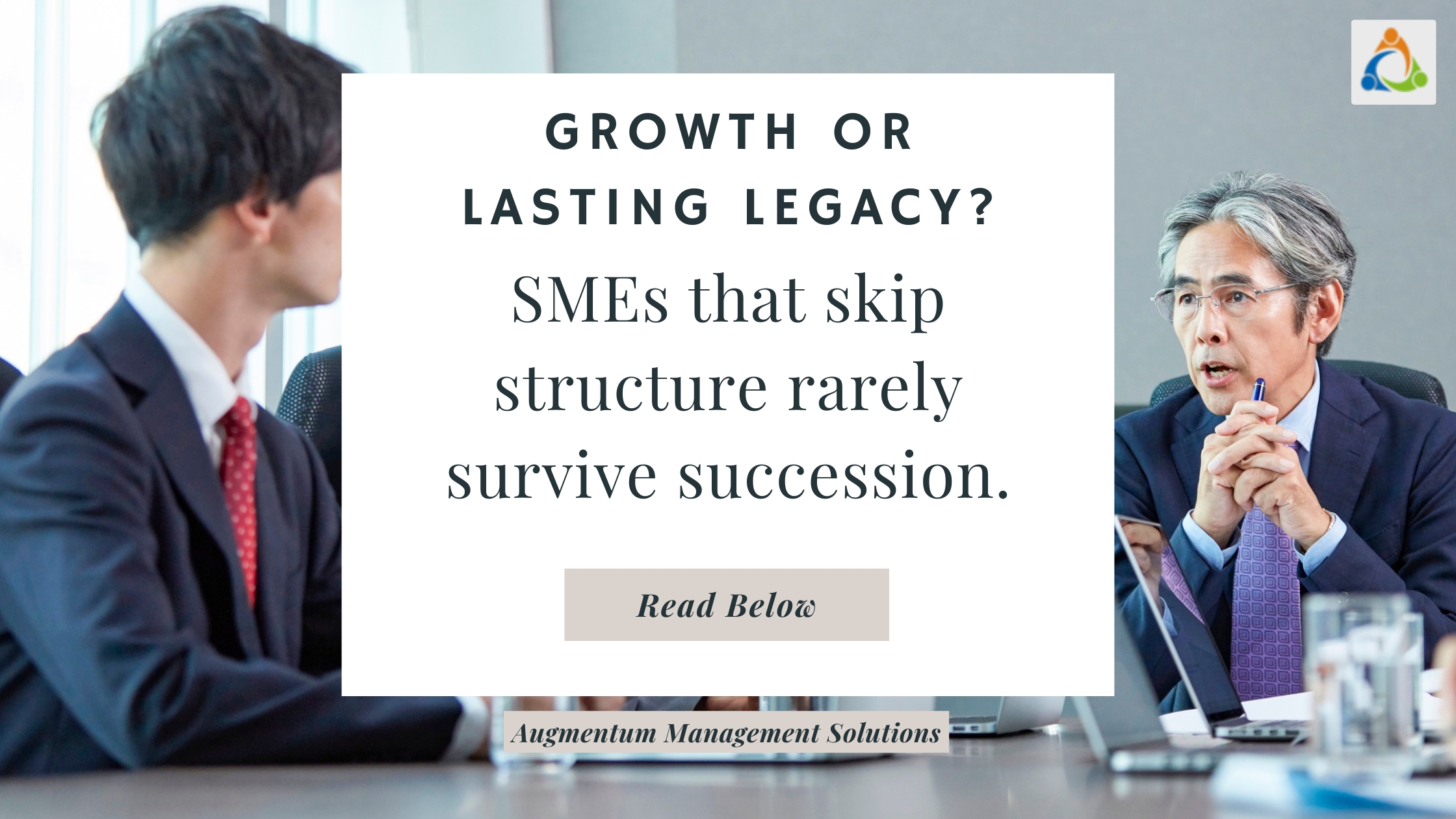The strongest CEOs have one thing in common: they don’t know everything. At first, it sounds counterintuitive. Shouldn’t the top leader have all the answers? In reality, the leaders who thrive are not the ones armed with certainty but the ones fueled by curiosity.
Traditional leadership models conditioned CEOs to direct, instruct, and decide. But in today’s volatile environment, that mindset quickly turns into a bottleneck. The CEOs who succeed are the ones who ask the right questions, empower their teams, and adapt faster than the challenges around them.
Data shows that companies where CEOs actively seek diverse input outperform competitors by 36%. In other words, leadership is no longer about authority – it’s about agility.

Clarity Over Control
Strong CEOs don’t carry the burden of knowing everything. They create clarity by asking the right questions and aligning teams to shared priorities.
In high-growth companies, control often becomes a trap. Leaders feel pressure to micromanage, fearing mistakes or missed opportunities. But micromanagement clouds decisions and slows progress. The shift comes when CEOs stop trying to manage every detail and instead focus on setting a clear direction.
When clarity replaces control, teams gain confidence to act, and decisions speed up without losing alignment. This shift transforms leadership from a bottleneck to a catalyst.
Trust Over Micromanagement
The best leaders don’t do everything – they build teams that can. Trust is the ultimate multiplier of leadership energy.
Micromanagement signals a lack of confidence, which erodes ownership and accountability. Employees stop taking initiative when they expect the CEO to intervene in every decision. The consequence is disengagement and stalled innovation.
CEOs who trust their teams, on the other hand, unlock exponential growth. They surround themselves with people smarter than them and give those people the freedom to act. That’s how leadership scales.
Questions Over Assumptions
Growth isn’t about having the right answers. It’s about asking the right questions.
Too often, leaders lean on their past experience, assuming what worked before will work again. But in fast-changing markets, assumptions quickly turn into blind spots.
The CEOs who lead transformation don’t settle for assumptions. They test, validate, and challenge their own thinking. Instead of saying, “Here’s what we’ll do,” they ask, “What are we missing? What do the numbers say? What’s the market telling us?”
This questioning mindset shifts organizations from static planning to dynamic problem-solving.
Adaptability Over Rigidity
Leaders who listen and adapt drive lasting transformation.
Rigid leadership fails when environments change and they always do. Adaptability, however, ensures resilience. CEOs who embrace flexibility adjust strategies when new data, market trends, or team insights demand it.
This adaptability doesn’t signal weakness; it reflects strength. It shows the confidence to evolve without fear of being wrong. In fact, the most admired CEOs are those who reframe challenges as opportunities to reinvent.
Building Teams Smarter Than You
Great CEOs don’t fear intelligence – they cultivate it.
Weak leaders surround themselves with followers. Strong leaders surround themselves with people who challenge them, who bring fresh ideas, and who stretch the boundaries of what’s possible.
Empowering such teams doesn’t diminish the CEO’s role; it amplifies it. Instead of being the single source of knowledge, the CEO becomes the architect of collaboration. The collective intelligence of the team pushes the company forward faster than any single leader could.
Beyond Certainty: Leading With Curiosity
The strongest CEOs prove that leadership isn’t about knowing more – it’s about learning faster.
Certainty closes doors. Curiosity opens them. When leaders replace control with clarity, micromanagement with trust, assumptions with questions, and rigidity with adaptability, they set the stage for transformation that lasts.
The takeaway is this: leadership is not about having all the answers. It’s about creating an environment where the right answers emerge through trust, clarity, and curiosity.




